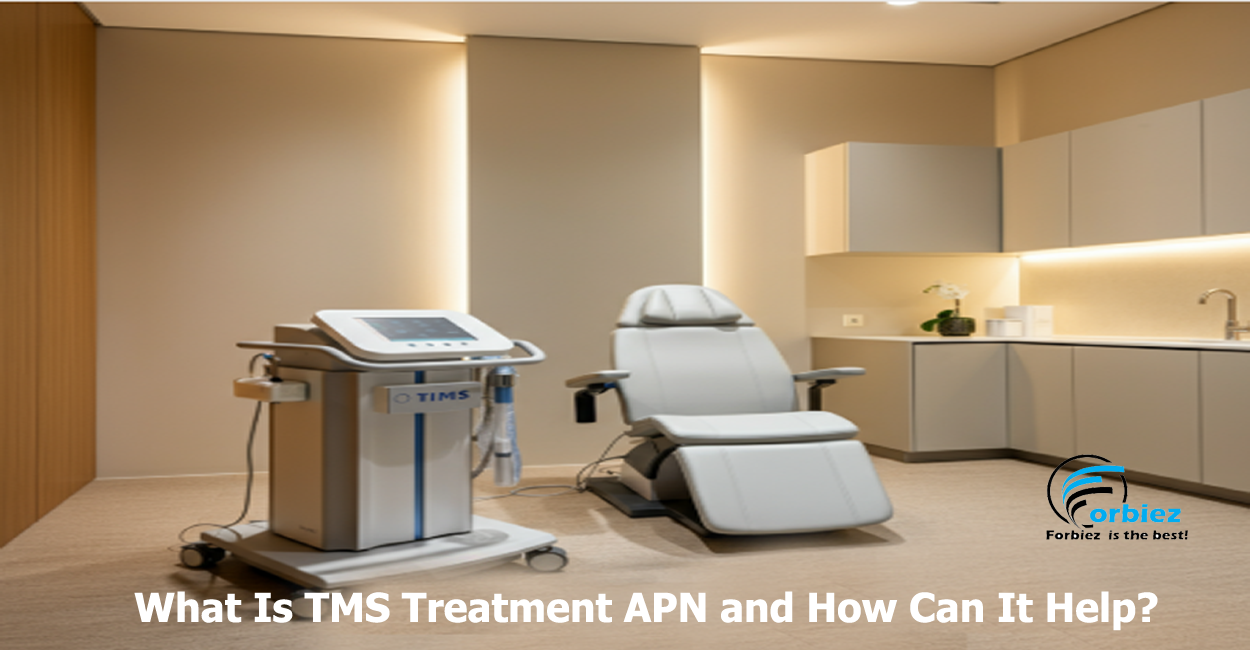When you’re feeling sad for a long time, or it seems hard to concentrate, it can make life tough. But there’s a kind of help called TMS treatment APN that could make you feel better. This guide will explain what TMS treatment APN is, why people use it, how it works, and who might benefit from it.
What Is TMS Treatment APN?
TMS stands for Transcranial Magnetic Stimulation. Sounds fancy, right? Don’t worry, it’s much simpler than it sounds. This treatment uses gentle magnetic waves to help the brain work better. APN stands for the kind of device or service provider delivering TMS.
How Does TMS Treatment Work?
TMS treatment works like giving your brain a little wake-up nudge. During a session, a special machine sends magnetic pulses to specific parts of your brain. These pulses help areas of the brain that aren’t working well, especially the parts linked to feeling sad or anxious, to start working better.
Think of it like fine-tuning a musical instrument; the magnetic waves “tune” your brain to make it function more smoothly.
Is It Safe?
Yes, TMS treatment is very safe. It doesn’t involve putting chemicals in your body. There’s no surgery, and most people don’t feel pain while getting it. Some might feel a tapping or tingling on their head, but that’s about it.You can also read The Amazing Plant That Helps Us Stay Healthy.
Why Do People Choose TMS Treatment APN?
Many people try TMS when other options, like medication or therapy, haven’t worked well for them. Here’s why TMS is a great choice:
- It’s Noninvasive – No needles, no surgery. Just sit in a comfy chair during the session!
- Few Side Effects – Unlike medications that can cause heavy tiredness or other side effects, TMS treatment usually has only mild ones, like a bit of a headache, which go away quickly.
- It Helps with Depression – For those dealing with severe sadness (depression), TMS can make life feel good again.
Does It Really Work?
Studies show that TMS treatment is very effective for many people. It’s been approved by health experts all over the world. For example, research reveals that many who tried TMS saw big improvements in their mood and thoughts.
Who Can Benefit from TMS Treatment APN?
Many people can find relief through TMS. You might benefit from it if you’re experiencing:
- Long-lasting Depression
- Anxiety That Won’t Go Away
- Post-Traumatic Stress Disorder (PTSD)
- Brain Fog or Low Concentration
However, TMS isn’t for everyone. If you have metal implants, certain medical conditions, or epilepsy, your doctor might suggest other treatments instead.
Can Kids or Teens Use TMS?
Right now, doctors mostly use TMS for adults, but some research is being done to see how it could help kids or teenagers in the future.
How Do TMS Treatment APN Sessions Feel?
Here’s what you can expect during a typical TMS session:
- The Setup
You’ll sit in a comfy chair, and a trained person will place a small coil lightly on your head. Don’t worry—it doesn’t hurt!
- The Treatment
The coil sends gentle magnetic pulses to your brain. It lasts about 20-40 minutes.
- Go Back to Your Day
Once the session ends, you can go about your normal day. There’s no recovery time.
Most people will need several sessions over a few weeks to feel the full effects.
Will I Feel Better Right Away?
TMS isn’t a lightning-fast solution. While some people notice changes within days, others may need a few weeks to feel real improvements.
How Does TMS Treatment APN Compare to Other Treatments?
You might wonder, “How is TMS different from therapy or medication?” Here’s a quick comparison:
- TMS vs. Medication
Medicines work inside your body by balancing brain chemicals. But they can take time to work and often come with side effects. TMS targets your brain directly, so there’s no need to swallow anything.
- TMS vs. Talk Therapy
Therapy helps you unpack feelings and build better habits. TMS, on the other hand, gives your brain a direct boost. Both can work together!
Why Isn’t It More Common?
TMS treatment is still growing in popularity. Since it’s a newer option compared to talk therapy or medicine, not everyone has heard about it yet. It’s also important to check with health insurance providers, as not every plan covers TMS sessions.
What Are the Benefits of TMS?
TMS has many advantages. Here are just a few:
- Better Mental Health – Reduce depression and anxiety.
- Low Downtime – You won’t need to take days off.
- Drug-Free Solution – Perfect if medication hasn’t helped or caused side effects.
- Personalized Approach – Each TMS session can be tailored to meet your unique needs.
Are There Any Risks?
The risks are super low. Some people feel mild scalp discomfort during the process or a brief headache afterward. Serious issues, like seizures, are very rare.
But it’s crucial to talk to your healthcare provider about your medical history so they can ensure TMS is safe for you.
Where Can You Get TMS Treatment APN?
TMS treatment might be available at local clinics or through hospitals. Specialists who understand mental health and brain function offer TMS. When searching for a provider, look for certified experts who can answer all your questions.
Can TMS Treatment Be Done At Home?
Not yet. Since TMS requires very specific equipment and expertise, it’s done best in medical facilities. But keep an eye out for new technologies in the future!
Why Should You Consider TMS Treatment APN?
If you’ve tried medications or therapy but still feel stuck, TMS might just be the solution you’ve been searching for. It’s gentle, doesn’t require medicine, and could help your brain find balance again.
By choosing TMS treatment APN, you’re giving yourself a chance to feel brighter, calmer, and more in control of your emotions.
Final Thoughts
Living with sadness, worry, or stress isn’t easy. TMS treatment APN offers a path toward better days, all without drastic steps. Whether you’re new to the idea or have heard about it before, it might be time to explore TMS treatment APN as an option for you.
Remember, always consult with a healthcare provider before starting any new treatment. They’ll help figure out if TMS is the perfect fit for you.




